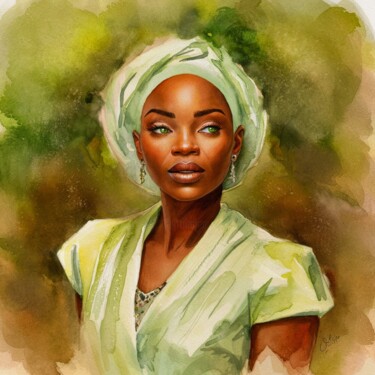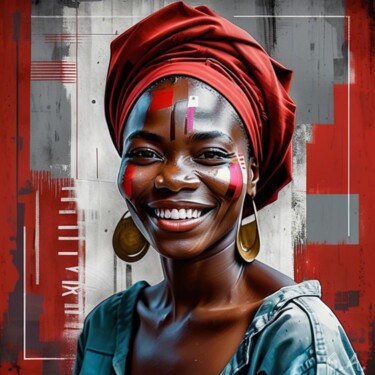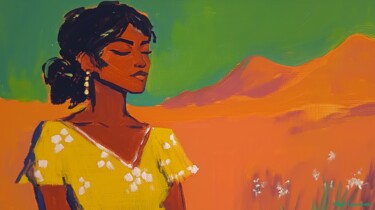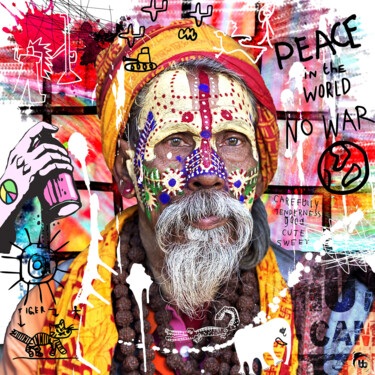1,544 オリジナルの限定版とデジタルアートプリントの販売:
オリジナルのデジタルアート作品の販売を探していますか?
現代アート、ストリートアート、抽象芸術、比喩的な芸術など、すべてのスタイルとすべてのデジタルアートテクニックを探索してください。ArtMajeurはすべての芸術的感性に応え、360万を超える現代芸術作品を発見して、20年間あなたのそばで美しさを祝ってきました。 ..または取得!世界中の現代アーティストの作品を見つけて、クラスでインテリアを飾りましょう!シンプルなアート愛好家または確認済みのコレクター?あなたの装飾を本当に強化するお気に入りのキャンバスや絵画を見つけてください。 ArtMajeurは、世界最高の現代アーティストによるオリジナル作品、限定版、アートプリントを提供しています。 ArtMajeurでは、デジタルアート作品はアートマーケットの愛好家や専門家によって選ばれています。トレンディで受賞歴のある有名なアーティストのオリジナル作品と、現代アートの分野で新たに高まっている価値観を選択して、デジタルアートをオンラインで購入するプロセスをガイドします。
Discover contemporary World Culture Digital Arts on ArtMajeur
Contemporary World Culture Digital Arts is a vibrant and dynamic art form that has emerged in recent years. Digital art encompasses a wide range of artistic practices that utilize digital technology, such as computers, software, and programming languages, to create original works of art. The materials and supports used in contemporary digital art are diverse, including projections, installations, animations, and virtual reality experiences. What sets digital art apart from traditional art forms is its ability to engage with the viewer in new and innovative ways, using interactive technologies and immersive environments to create unique and unforgettable experiences. This art form challenges our perceptions of what art can be and how it can be experienced, and it continues to push the boundaries of creativity and innovation in the digital age.
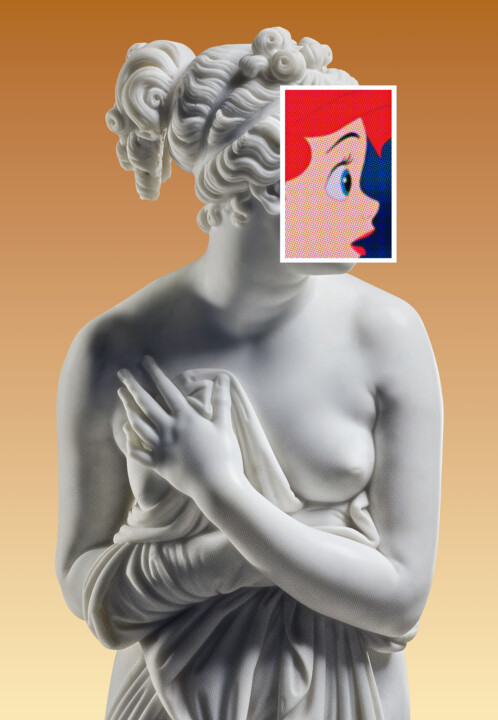
©2023 José Luis Guerrero
Origins and History
Contemporary World Culture Digital Arts emerged from the fusion of technology, art, and global culture. It began to gain momentum in the 1990s with the advent of digital media and the internet. This period saw the rise of net.art, a movement that explored the potential of the internet as an artistic medium. The years that followed saw advancements in software and hardware technology, which allowed artists to create increasingly complex and interactive digital works. Today, contemporary World Culture Digital Arts encompasses a vast array of art forms, including video games, digital installations, virtual reality experiences, and more.

©2024 Laurence Verney
Evolutions of theses works in the contemporary art market
Contemporary World Culture Digital Arts have undergone a remarkable evolution in recent years, with artists exploring the possibilities of technology to create immersive and interactive experiences. From virtual reality installations to generative art and interactive sculptures, these works challenge traditional notions of art and blur the boundaries between the physical and digital worlds. The importance of these digital arts in the contemporary art market cannot be overstated, as they offer a fresh perspective on the role of technology in our lives and open up new avenues for artistic expression. Critics and collectors alike are drawn to these works for their innovative use of technology, their ability to engage with audiences in new ways, and their potential to shape the future of art. As technology continues to advance, it will be fascinating to see how these digital arts evolve and what new forms of expression they will inspire.

©2025 Mickael Seignouret
Related Famous Artists
Contemporary artists who are celebrated for their work about the current state of World Culture Digital Arts include:
Trevor Paglen - Known for his work in surveillance studies, Paglen’s œuvre includes photographs, installations, and videos that explore the hidden structures of power in the digital age.
Hito Steyerl - A German artist who works in video and installation, Steyerl’s work often engages with the intersection of technology, politics, and capitalism, offering a critical perspective on the contemporary world.
Cory Arcangel - An American artist who uses code, software, and other digital tools to create music, videos, and installations that reflect on the aesthetics and culture of the internet age.
Rafael Lozano-Hemmer - A Mexican-Canadian artist who works with interactive installations, Lozano-Hemmer’s work often explores the relationships between people and technology, and the ways in which digital media shapes our experience of the world.
Ed Atkins - A British artist who works primarily in video, Atkins’ work explores the intersections of technology and the body, often using computer-generated images and animations to create surreal and unsettling scenarios.
These artists offer a range of perspectives on the contemporary world of digital culture, engaging with issues such as surveillance, capitalism, power, and the relationship between technology and the human body. Their work invites us to question our assumptions about the role of digital media in our lives and to reflect on the ways in which it shapes our understanding of ourselves and the world around us.

©2024 Laurence Verney
Notable contemporary World Culture Digital Arts
Contemporary world culture digital arts have revolutionized the way we perceive art. These artworks are characterized by their use of digital technology to create stunning, thought-provoking pieces.
One such artwork is "The Physical Impossibility of Death in the Mind of Someone Living" by Damien Hirst, created in 1991. This piece features a preserved tiger shark suspended in a tank of formaldehyde, challenging our notions of mortality and the transience of life.
Another notable artwork is "The Clock" by Christian Marclay, created in 2010. This masterpiece is a 24-hour video montage that features thousands of film clips depicting clocks and timepieces, synchronized to real-time. This work explores the concept of time and its relationship to our daily lives.
"Rain Room" by Random International, created in 2012, is an interactive installation that simulates a continuous downpour of rain. However, visitors can walk through the rain without getting wet due to sensors that detect their presence and stop the water flow. This artwork explores the intersection between technology and nature.
"Digital Orca" by Douglas Coupland, created in 2009, is a sculpture that features a stunning, life-sized Orca whale rendered in a pixelated, digital style. This artwork draws attention to the effects of technology on our environment and the ways in which we perceive the natural world.
Overall, contemporary world culture digital arts challenge our perceptions of reality and invite us to question our place in the world. These artworks are a testament to the power of technology to inspire and transform our understanding of art.
Frédéric Font (Chroma)
デジタルアーツ | 47.2x31.5 in
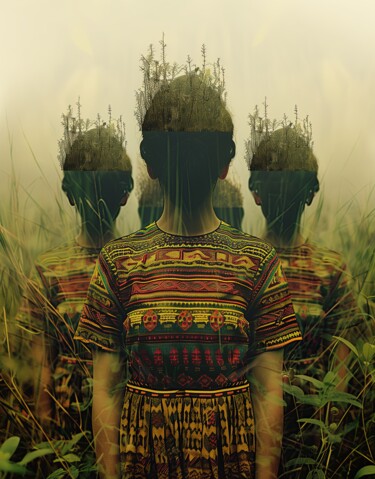
Aethel Voss
デジタルアーツ | 30x24 in

Gaboriau Gérald
デジタルアーツ | いくつかのサイズ
